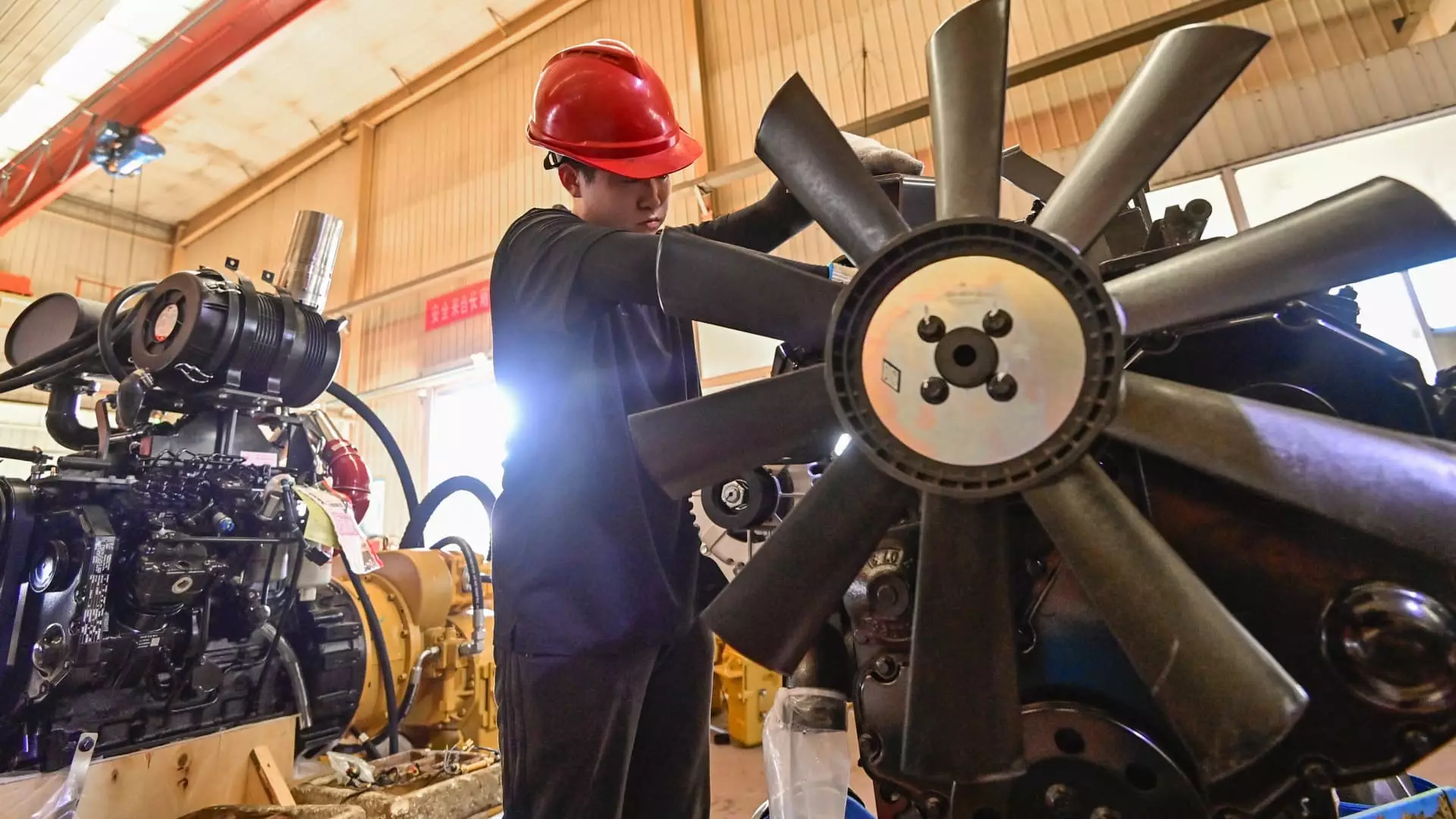In October 2023, China’s manufacturing scene exhibited signs of revitalization as smaller manufacturers reported an uptick in activity, following a private survey conducted by Caixin and S&P Global. The manufacturing purchasing manager’s index (PMI) registered at 50.3, a notable increase from the previous month’s reading of 49.3, signaling a shift towards expansion. This recent figure eclipsed analysts’ forecasts of 49.7, illustrating a positive divergence from stagnation. Such PMI readings are pivotal; values above 50 indicate a growth trajectory, while those below reflect contraction. These recent developments follow the publication of official PMI data that also suggested a revival in the sector for the first time since April, marking a crucial moment for the world’s second-largest economy.
The focus of the Caixin manufacturing survey is predominantly on smaller and private sector manufacturers. This contrasts with the official PMI data, which largely reflects the performance of larger state-owned enterprises. The recent shift in the Caixin index points towards a recovery in both supply and demand within this segment. According to Wang Zhe, a senior economist at Caixin Insight Group, both market demand and production levels have begun to show improvements, pointing towards a broad-based recovery in manufacturing.
Despite these encouraging signs, challenges remain, particularly concerning export orders, which continued to decline, albeit at a slower pace. This caution in exports and a further reduction in employment figures underscore a hesitance among manufacturers to commit to increasing their workforce. The existing demand has seen a moderate revival, but the employment figures indicate that many manufacturers remain acutely aware of ongoing uncertainties.
Economist Andy Maynard from China Renaissance highlighted that the recent PMI results are promising, suggesting that the government’s recent stimulus measures may finally be yielding positive results. In September, the People’s Bank of China implemented significant policy changes, such as cutting the reserve requirement ratio (RRR) for banks and reducing interest rates. Such measures aim to inject liquidity into the economy, addressing the challenges posed by weak consumer spending and a sluggish property market.
Maynard noted that while these steps can be interpreted as an initial attempt at economic rejuvenation, they also raise questions about the long-term sustainability of such growth. As the government and policymakers continue to navigate the delicate balance between stimulating growth and managing inflation, future data will be essential in determining the effectiveness of these interventions.
The overall sentiment in the market appears to be stabilizing, fueled by hopes surrounding a more pro-growth agenda from the Chinese government. However, as Gary Ng, senior economist at Natixis, pointed out, uncertainty looms large. The sharp competition within China’s domestic market and the lower-than-average industrial utilization rates may pose significant challenges to sustained growth. Additionally, factors such as global protectionism and the potential impact of upcoming elections in the United States could further complicate demand dynamics.
Understanding whether price levels will increase is critical to assessing the overall recovery in China’s manufacturing sector. An increase in prices could point towards stronger demand pressures and a more robust economic recovery, while stagnant prices may suggest ongoing issues that need to be addressed.
The Road Ahead
As China’s parliament convenes next week, many analysts anticipate announcements regarding additional fiscal stimulus measures aimed at bolstering the economy. Such moves will be closely monitored as businesses, policymakers, and investors continuously evaluate the landscape of the Chinese manufacturing sector. Future PMI readings will be crucial for understanding whether recent trends signal a sustainable recovery or if these are merely fleeting improvements amidst deeper structural challenges.
The narrative surrounding China’s manufacturing sector is one of cautious optimism mixed with underlying challenges. While October’s PMI data points towards a positive shift, the complexities inherent in global market conditions and domestic economic policies will play a pivotal role in shaping the future trajectory of manufacturing activity in China. The pathway to robust and sustainable growth remains to be fully charted as stakeholders remain vigilant in monitoring emerging economic signals.

Leave a Reply